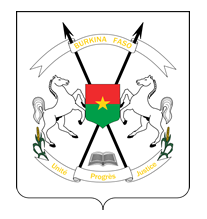Burkina Faso: Government
Due to military coup, the information on these pages may not reflect current conditions in the country.
Key Figures
- Chief of State:
- Transitional President Capt. Ibrahim Traore
- Head of Government:
- Prime Minister Joachim Kylem De Tambela
Overview
- Government Name:
- Burkina Faso
- Constitution:
- Adopted: 1991; Dictates fundamental rights and duties, defines the state and national sovereignty, delegates judicial power, discusses treaties and international agreements, and discusses the control of the constitutionality of laws.
- Government Type:
- Presidential Republic

Index of Economic Freedom
Country Risk Rating
Government Branches
| Main Powers | Election Process | Election Cycle 1 | |
|---|---|---|---|
| Executive | The president appoints the prime minister, judges and cabinet, and is the commander-in-chief of armed forces. The prime minister advises the president on appointments and daily executory tasks. |
The president is elected by absolute majority vote through a two-round system. |
5 years |
| Judicial | The supreme court of appeals is the highest court of the land. The constitutional council is responsible for determining cases about the constitution. |
The supreme court judge appointments are mostly controlled by the president of Burkina Faso. Constitutional council judges are appointed by the president of Burkina Faso upon the proposal of the minister of justice. |
Supreme Court judges: no term limit; Constitutional Council judges: 9 year terms with one-third of the judges being renewed every 3 years |
| Legislative | The legislative branch approves appointed officials, responsible for policy making. |
The senate has 39 members elected by regional governing councils, 21 indirectly elected by special interest groups, and 39 appointed by the president. The national assembly has 127 members elected through a closed-list proportional representation system. |
5 years |
Regional Trade Blocs
International Organization Participation [2]
Environmental Agreements [3]
Tax Information [2]
- Tax Authority:
- Information not available
- Tax Name:
- Information not available
Sources:
- ElectionGuide http://www.electionguide.org/
- EY, http://www.ey.com
- CIA World Factbook, https://www.cia.gov/the-world-factbook/
- U.S. Bilateral Relations Fact Sheets http://www.state.gov/r/pa/ei/bgn/


